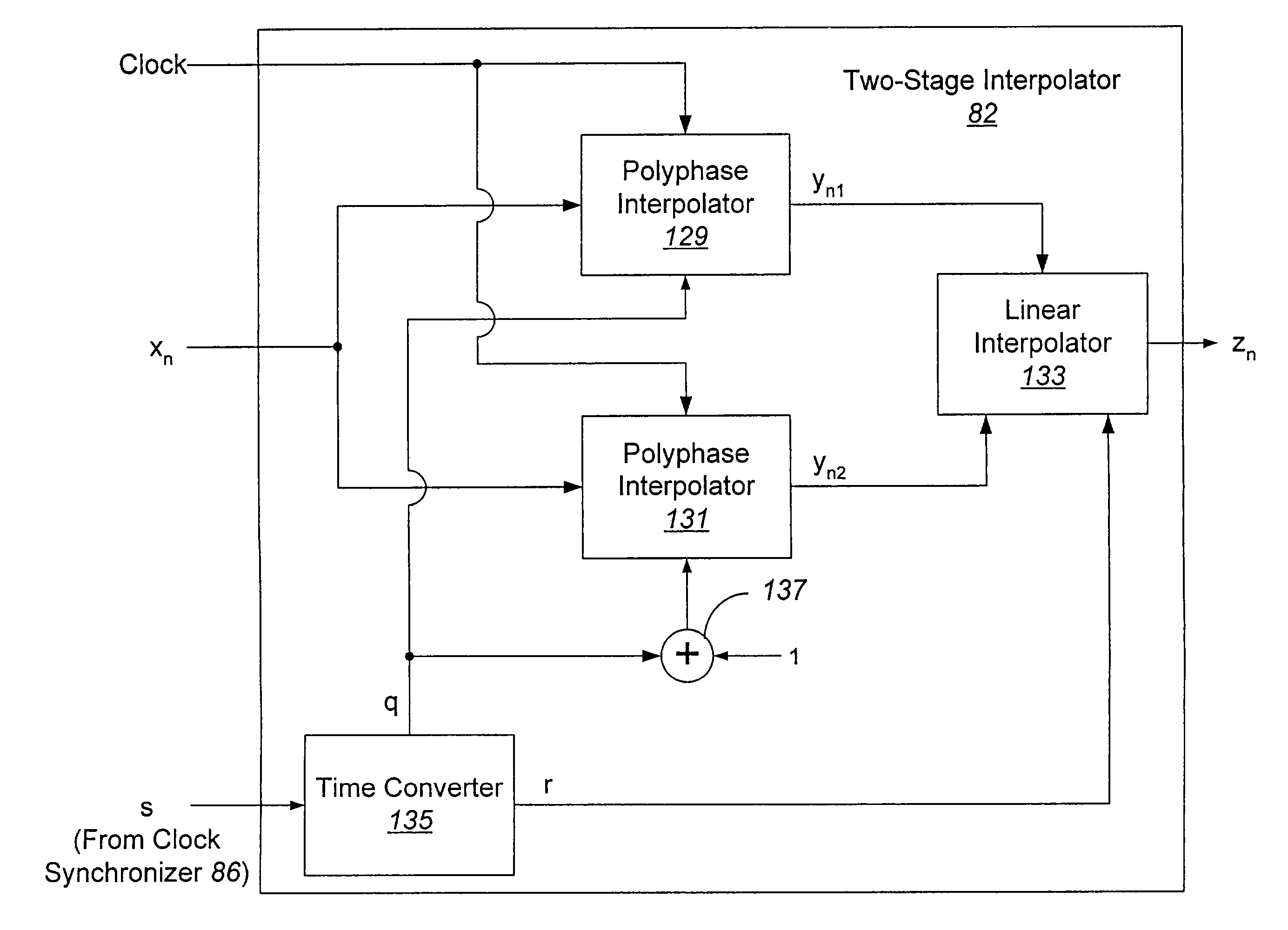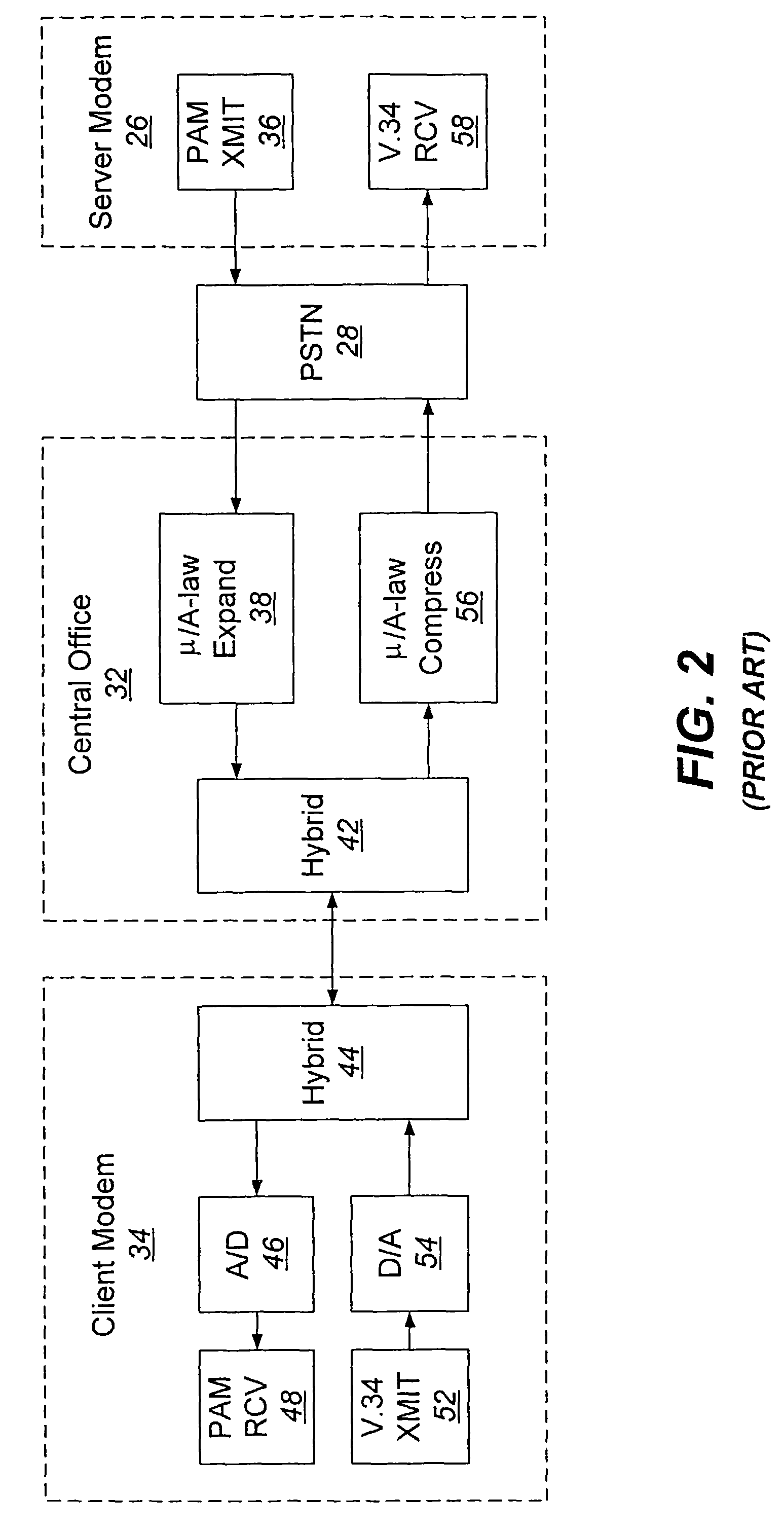Receivers, methods, and computer program products for an analog modem that receives data signals from a digital modem
a digital modem and data signal technology, applied in the field of modems, can solve the problems of high service cost, slow deployment of isdn, and impairment of both ends of communication sessions, and achieve the effect of efficient implementation
- Summary
- Abstract
- Description
- Claims
- Application Information
AI Technical Summary
Benefits of technology
Problems solved by technology
Method used
Image
Examples
Embodiment Construction
[0051]The present invention will now be described more fully hereinafter with reference to the accompanying drawings, in which preferred embodiments of the invention are shown. This invention may, however, be embodied in different forms and should not be construed as limited to the embodiments set forth herein. Rather, these embodiments are provided so that this disclosure will be thorough and complete, and will fully convey the scope of the invention to those skilled in the art. Like reference numbers signify like elements throughout the description of the figures.
[0052]As will be appreciated by those skilled in the art, the present invention can be embodied as a method, a digital signal processing system, or a computer program product. Accordingly, the present invention can take the form of an entirely hardware embodiment, an entirely software (including firmware, resident software, micro-code, etc.) embodiment, or an embodiment containing both software and hardware aspects. Furth...
PUM
 Login to View More
Login to View More Abstract
Description
Claims
Application Information
 Login to View More
Login to View More - R&D
- Intellectual Property
- Life Sciences
- Materials
- Tech Scout
- Unparalleled Data Quality
- Higher Quality Content
- 60% Fewer Hallucinations
Browse by: Latest US Patents, China's latest patents, Technical Efficacy Thesaurus, Application Domain, Technology Topic, Popular Technical Reports.
© 2025 PatSnap. All rights reserved.Legal|Privacy policy|Modern Slavery Act Transparency Statement|Sitemap|About US| Contact US: help@patsnap.com



